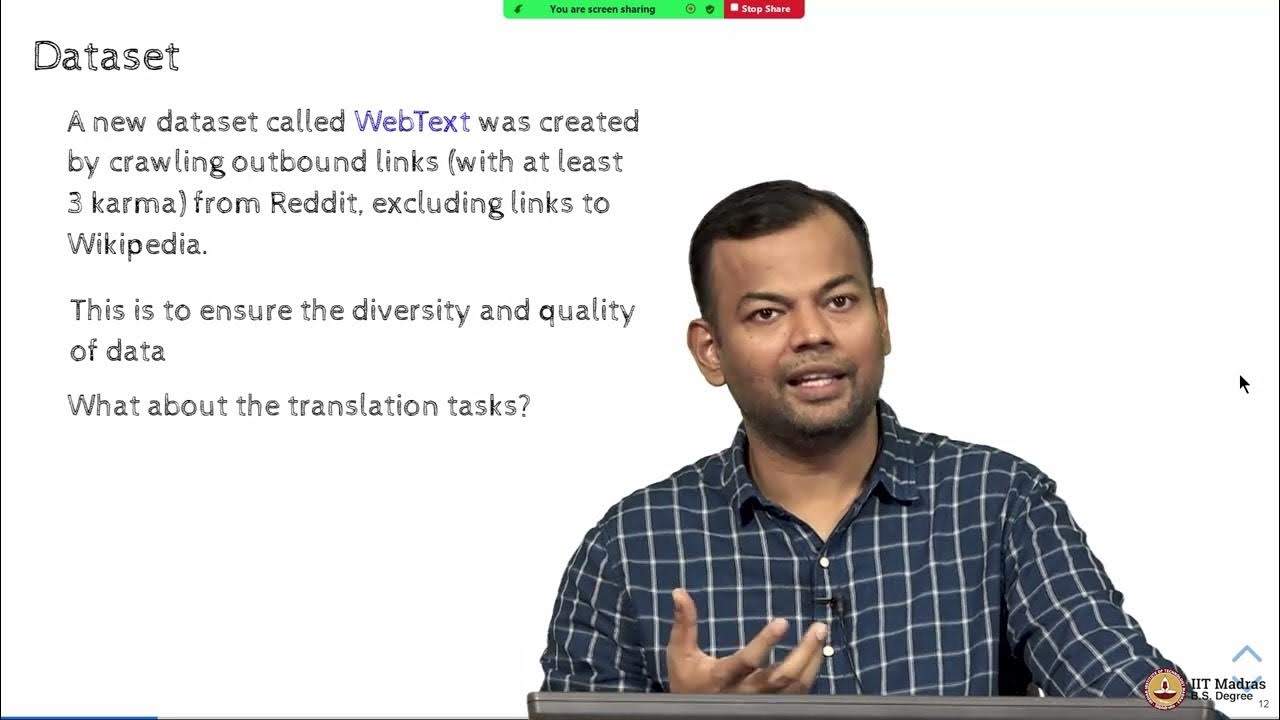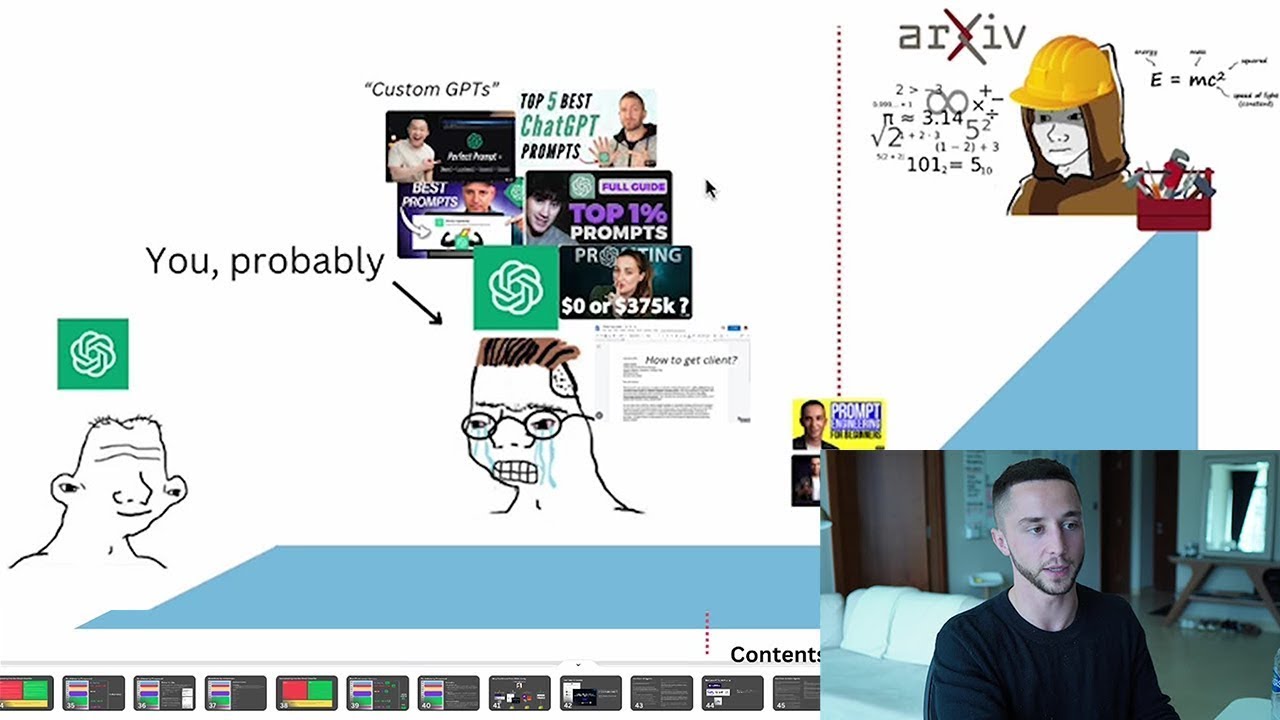Few-Shot Prompting Explained
Summary
TLDRThe video script introduces 'F-shot prompting,' a technique to enhance the performance of large language models by providing examples or demonstrations to guide the model in understanding tasks better. It contrasts this with 'zero-shot prompting,' which relies on the model's internal knowledge without examples. The script demonstrates F-shot prompting with examples, including defining words and sentiment classification, showing how models can generate reliable responses without fine-tuning. It highlights the versatility of F-shot prompting for various tasks and its potential to address the models' limitations in understanding complex or unfamiliar tasks.
Takeaways
- 📊 F-shot prompting enhances LLMs' performance by providing examples or demonstrations.
- 🔍 Zero-shot prompting relies on the model's internal understanding without examples.
- 📝 F-shot prompting is useful when the model lacks sufficient data or task understanding.
- 🚀 By providing examples, the model better grasps the task, leading to more reliable outputs.
- 💡 F-shot prompting is especially valuable for complex tasks or underrepresented data areas.
- 📚 The process involves showing the model how to perform a task through demonstrations.
- 🛠️ F-shot prompting can be adapted for various tasks, including classification and content generation.
- 📋 The structure of prompts can vary, with different ways to design system, user, and assistant roles.
- 🧩 Examples in F-shot prompting set expectations for output, including tone, style, and content.
- 🔗 The next topic in the series will cover Chain of Thought prompting, another powerful technique.
Q & A
What is the main topic of the video?
-The main topic of the video is 'F-shot prompting,' a method used to improve the performance and reliability of large language models by providing examples or demonstrations.
What is the difference between zero-shot prompting and F-shot prompting?
-Zero-shot prompting involves giving an instruction to the model without any examples, assuming the model has an internal understanding of the task. F-shot prompting, on the other hand, involves providing the model with examples or demonstrations to help it understand and perform the task better.
What is an example of a task that could benefit from F-shot prompting?
-An example task that could benefit from F-shot prompting is sentiment classification, where the model is given examples of text classified as either negative or positive to improve its classification accuracy.
What is the significance of providing examples in F-shot prompting?
-Providing examples in F-shot prompting helps the model understand the task better and gives it a clearer expectation of the type and quality of output required, leading to more reliable and higher-quality answers.
How does the model use the examples provided in F-shot prompting?
-The model uses the examples to recognize patterns and understand the task at hand. It then applies this understanding to generate responses that align with the demonstrated examples, without the need for fine-tuning the model's weights.
What is the 'GPT-3' mentioned in the script, and how does it relate to the concept of F-shot prompting?
-GPT-3 is a large language model developed by OpenAI. The script discusses using GPT-3 for F-shot prompting to demonstrate how the model can generate sentences or classify text based on provided examples.
Can F-shot prompting be used for tasks other than classification or definition?
-Yes, F-shot prompting can be used for various tasks, including but not limited to generating specific tones in emails, creating headlines, or defining concepts, by providing the model with relevant examples.
What is the importance of structuring the prompt correctly in F-shot prompting?
-Correctly structuring the prompt in F-shot prompting is crucial as it helps the model understand the task, the input, and the expected output. It can also include indicators or delimiters to help the model distinguish between different parts of the prompt.
How does the video script demonstrate the effectiveness of F-shot prompting?
-The video script demonstrates the effectiveness of F-shot prompting by showing how the model can generate a sentence using a made-up word after being provided with a demonstration of the task.
What is the next concept that the video series will cover after F-shot prompting?
-The next concept that the video series will cover after F-shot prompting is 'Chain of Thought prompting,' which is another method to enhance the performance of large language models.
How can one experiment with F-shot prompting to improve model performance?
-One can experiment with F-shot prompting by providing the model with various examples that are representative of the task at hand. This could include different types of inputs and corresponding outputs to help the model generalize better.
Outlines

このセクションは有料ユーザー限定です。 アクセスするには、アップグレードをお願いします。
今すぐアップグレードMindmap

このセクションは有料ユーザー限定です。 アクセスするには、アップグレードをお願いします。
今すぐアップグレードKeywords

このセクションは有料ユーザー限定です。 アクセスするには、アップグレードをお願いします。
今すぐアップグレードHighlights

このセクションは有料ユーザー限定です。 アクセスするには、アップグレードをお願いします。
今すぐアップグレードTranscripts

このセクションは有料ユーザー限定です。 アクセスするには、アップグレードをお願いします。
今すぐアップグレード5.0 / 5 (0 votes)






